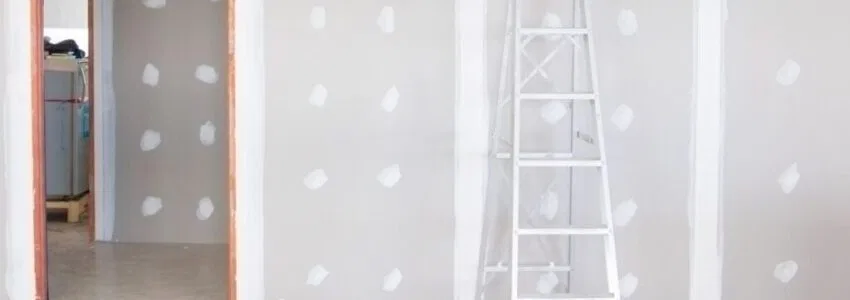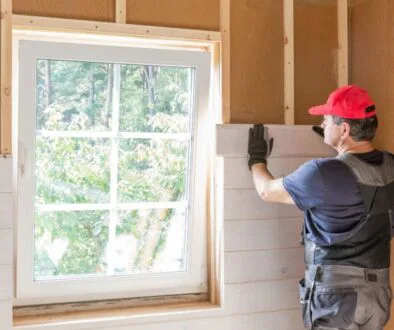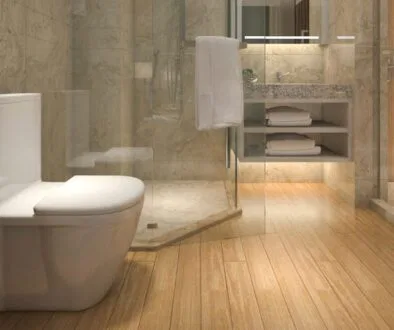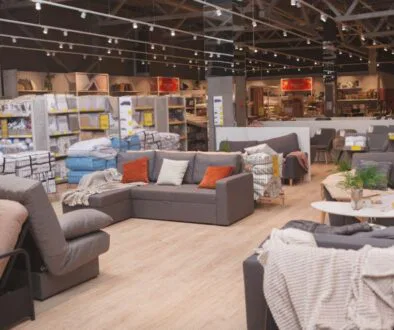The Best Drywall Alternatives To Use In 2022

Published October 4, 2022
You may not know this, but every day we walk past wall after wall after wall of something we call drywall. It goes by many different names, including sheetrock and plasterboard, but ultimately, it’s an incredibly versatile and inexpensive construction material that’s used in many settings.
While drywall is one of the most prevalent materials used in constructing homes these days, it’s not the be-all and end-all. This article will cover some of the best drywall alternatives for 2022.
Why Not Drywall?
Drywall is an incredibly popular choice for homeowners and contractors and with good reason. Its benefits include the following:
- Affordable and cost-effective
- Ease of repair and installation
- High insulation
- Fire-resistant
Of course, as with all good things, there are trade-offs as well. The most glaring issue you may encounter with drywall is that it is prone to moisture problems.
Damp drywall will most likely lead to mold infestations, which nobody wants. Another downfall of drywall is that it lacks surface protection; drywall is not resistant to impacts, making it vulnerable to puncturing and holes.
Lastly, drywall can be quite boring. The reason why is because drywall tends to come in rather muted colors, making it monotonous and not that pleasant to the eye. It often lacks that “wow” factor that many people want their houses’ interior spaces to have in order to fully stand out.
10 Best Drywall Alternatives For 2022

-
Wood Planks
We start this list off with one of the classics – wood planks. Wood is a fantastic way to give your home a rustic, timeless country feel without the frequent maintenance required for drywall.
Unlike drywall, once you hang real wood planks up, you won’t need to do much more aside from keeping them moisture-free. It would be even better for you if these planks are coated with a light lacquer – something which shall further protect wooden planks from surface damage.
Wood planks are a fantastic cost-effective alternative to drywall that gives your homes an extra layer of richness and luxury. The one thing you might not really like about this material is that it will not blend with every home. It tends to provide a rustic, country vibe that may not match the overall aesthetic of your home.
-
Brick & Masonry
Speaking of classic and rustic, the next alternative on this list is brick and masonry. Even left unfinished, brick walls can add a ton of aesthetic value to any home.
Brick can be an even more inexpensive alternative to drywall, but some types may also be more expensive. However, the one thing you can guarantee is that it will last you an entire lifetime. Maintenance is also 100% hassle-free, requiring only a minor dusting every now and then.
-
Textured Wall Panels
Textured wall panels are quite popular in places for social gatherings, like hotel lobbies and restaurants. In simple terms, textured wall panels are 3D panels, meaning they protrude from the flat surface they’re installed on, distinguishing them from traditional wall coverings like paint and wallpaper.
The material of these panels is usually some sort of thin plastic or dense paperboard similar to the ones in egg cartons. They are placed directly onto an existing wall through heavy-duty adhesives or clips. Hence, they tend to peel off over time, necessitating replacement.
-
Veneer Plaster
The most similar alternative to drywall is veneer plaster. Veneer plaster refers to the thin layer of wet plaster that can be applied to practically any surface. Oftentimes, it is applied to an existing plaster-ready gypsum board.
In essence, veneer plaster is the ideal combination of drywall and plaster, giving you the best of both worlds. Compared to traditional drywall, veneer plaster gives an additional level of strength and protection from surface damage and moisture. You will not have to worry much about joints as you would with traditional drywall too.
While installing veneer plaster requires much less skill and fewer tools than traditional drywall, it is by no means a simple job. Its installation is quite time-consuming and labor-intensive, especially in comparison to many of the other drywall alternatives on this list.
-
Plaster & Lath
Last, but certainly not least, is one of the oldest methods for interior wall construction, seeing its origins in the 1700s in plaster and lath. Before there was drywall, plaster and lath was the go-to. But when drywall rose to popularity, this method was less and less used. If you are looking for a more traditional alternative to drywall, this might be your choice.
Plaster and lath installation is much more labor and time-intensive than drywall, but it does have its many upsides. This method involves nailing wooden slats horizontally onto your wall.
After which, you coat these laths in wet plaster, ensuring that they seep through the cracks in between them. This creates a sturdy wall that you can shape however you like, and it offers multiple benefits in insulation, fire resistance, and ease of repair. Unlike drywall, repairs are much easier as problem areas can be patched up instead of replacing the entire structure.
-
Rammed Earth
Rammed earth is a great alternative to drywall. It always utilizes natural materials and has been a well-established construction technique for thousands of years.
Although this ancient technique still uses gravel and compacted soil, it has been modernized thanks to the advent of precast panels. Such panels have insulative properties and are as durable as they are aesthetically pleasing. That said, it can be hard to find a contractor. Furthermore, rammed earth projects are more pricey than other drywall alternatives.
-
Acoustic Panels
Acoustic panels are commonly used by audiophiles because of their ability to absorb sound and reverberation. However, you too can make use of them, especially if you want to have a quiet interior space. I personally recommend them in recording rooms or your dream man cave.
You should also know that acoustic panels come in a wide range of colors. As such, you can set them up exactly how you want your room to look like. On top of that, acoustic panels are budget-friendly as well as a lot easier to install than many alternatives to drywall.
-
Corrugated Metal
Another excellent drywall alternative is corrugated metal. While the stuff is most commonly used for roofing, it has a ton of other purposes. For example, you can use corrugated metal sheets to introduce an industrial or rustic look to an interior space.
Corrugated metal is available in both sheet and panel form. Most manufacturers created utilize steel for their creation. However, you can also find corrugated metal made out of aluminum.
You can find corrugated metal sheets or panels in many places. Aside from that, you should know that corrugated metal is quite affordable. Moreover, it’s incredibly easy to install, regardless of whether you want it placed on your interior space’s walls or ceilings.
-
Plywood
Inexpensive, easy to install, and durable are qualities that all drywall alternatives should have. A material that ticks all of these boxes is plywood, which can be bought in most hardware stores in a wide array of dimensions and thicknesses.
While at first sight, plywood can look quite boring, it can be stained or painted so that it’ll match your interior space’s decor. Sadly though, you should know that plywood is not fire-resistant unless it’s treated with a special kind of stain. Thus, if fire safety is on your mind, this isn’t something that should be considered when you’re looking for a good drywall alternative.
-
Cement Board
Cement board is a great alternative to drywall if you’re working in an area where moisture can be a problem in the future. That’s because it holds up well against mold, rot, and mildew.
Installing cement boards is a straightforward process. Unfortunately, it’s not an easy one since cement boards tend to be both heavy and bulky. As such, you’ll need at least two individuals to set up cement boards. Also, ample time might be necessary depending on your project’s scale.
Hire The Timber Experts For Your Next Project
Vintage & Specialty Wood should be your source of the highest quality timbers from around the world. When it comes to fabricating and installing reclaimed wood or specialty wood products in your home, we don’t cut corners. We offer many reclaimed wood and specialty wood products such as Douglas Fir, white oak, and much more. We also offer timber framing and wood flooring services as well. Contact our team today to speak to a timber expert about what Vintage & Specialty Wood can do for you.

This Blog Is Fact Checked
This content has undergone meticulous fact-checking by our team of internal experts. Gain a deeper understanding of the high editorial standards we uphold on our website here.

About The Author
Christian Cruz is an experienced blogger with a deep passion for carpentry and home design. Over the years, Chris has written hundreds of articles on a myriad of topics. As a result, millions of people worldwide have read and benefited from his work.




